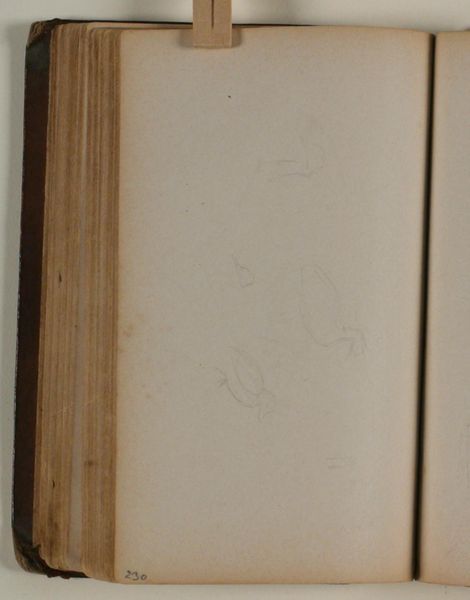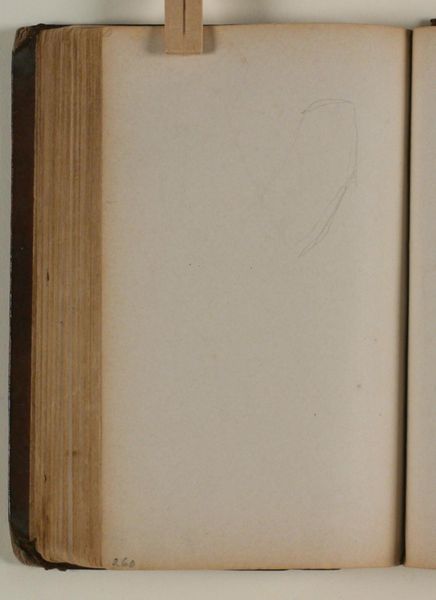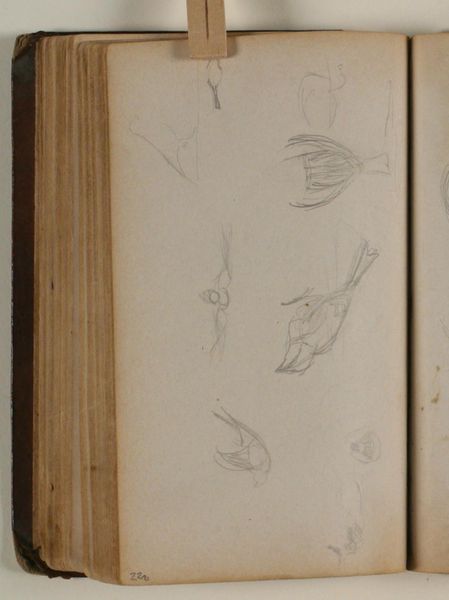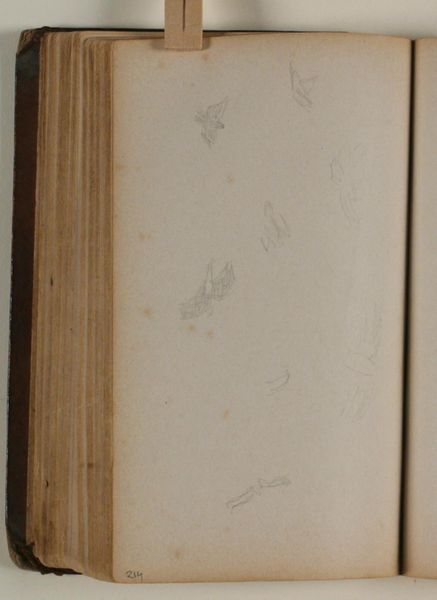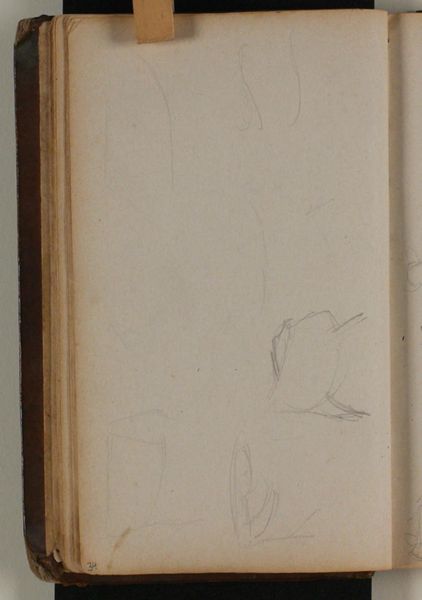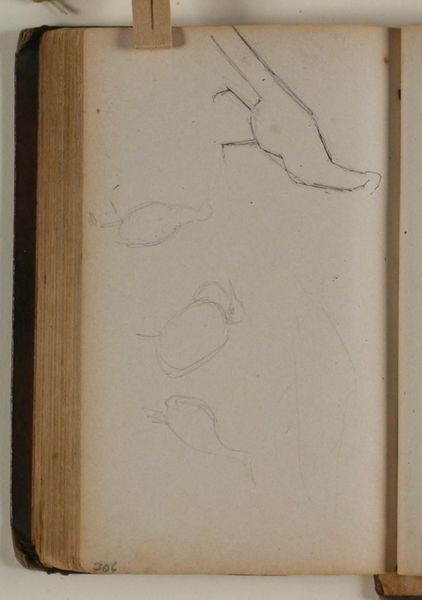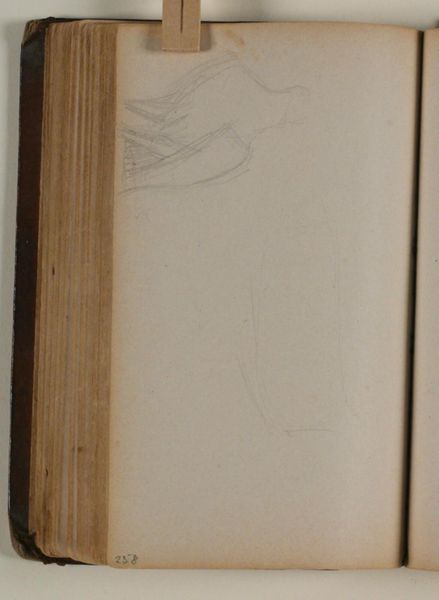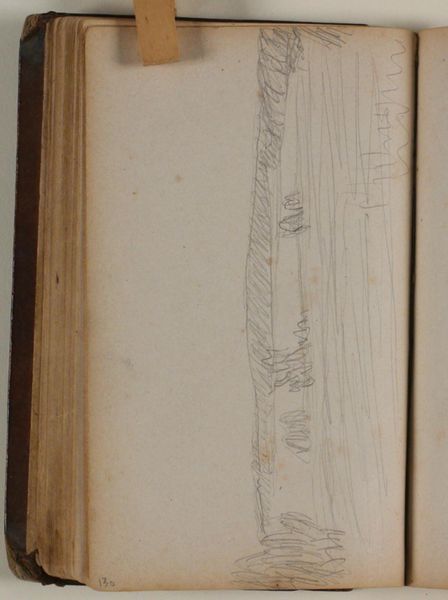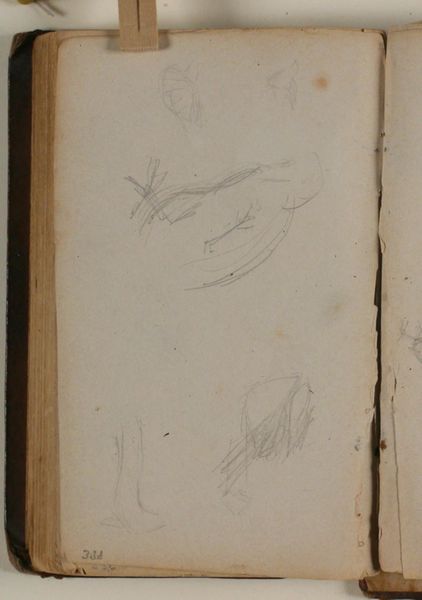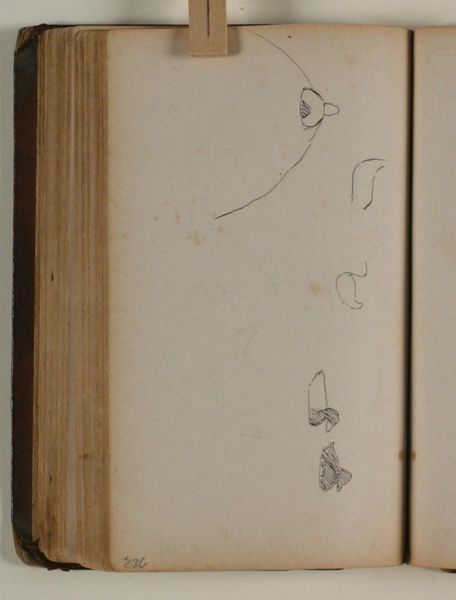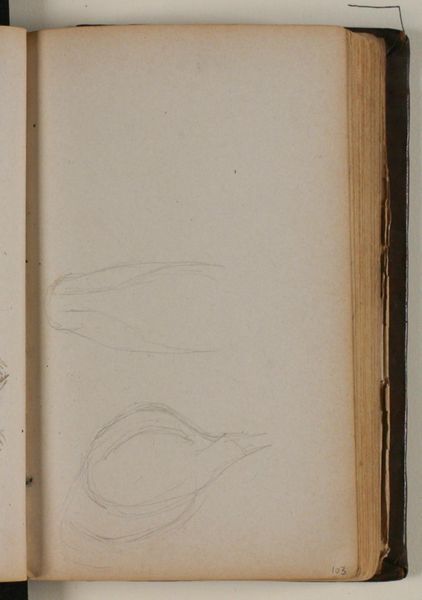
drawing, paper, pencil
#
portrait
#
drawing
#
figuration
#
paper
#
coloured pencil
#
pencil
#
realism
Curator: Here we have Niels Larsen Stevns' "Studier af fugle," created sometime between 1864 and 1941. It's currently held at the SMK, Statens Museum for Kunst. Editor: My first thought? Intimacy. It feels like a private glimpse into an artist's notebook, not really intended for public consumption, you know? These rough pencil sketches… what birds are we even looking at? Curator: These initial sketches represent an essential stage in the artist’s workflow. Stevns made the drawings with both pencil and coloured pencil on paper, this suggests a meticulous approach and perhaps, some intention for further detailing depending on the study’s objective. It speaks of preliminary studies that might inform later, more polished works. But let’s also consider his place within Danish art. Realism, yes, but situated in a historical moment rife with shifting cultural and political dynamics. Editor: The act of sketching, that's the heart of it for me. You see the hand at work, figuring out form, light, and texture. The paper itself holds the trace of this interaction; its fibres are pressed and marked. This reveals something intimate about the creative labour—the mundane, yet crucial process behind art. Did he sketch these from life, perhaps? Was this some specific type of local bird he encountered and wanted to memorialize in form? Curator: Given the time period, and the fact that these are studies, I wouldn't be surprised if he observed birds in nature but relied on available visual resources as well. Think about it: How would that access—or lack thereof—impact our interpretation today through colonial perspectives about naturalism. I suspect his focus wasn’t documentary accuracy. Editor: I agree. It feels much more personal and immediate. What's also interesting is considering the availability of paper, pencils, and even colored pencils in Denmark during his time, and how access to art materials influenced art. Also the state of naturalism itself may have factored here as well; depending on location these would or wouldn't have been materials available in abundance. Curator: So what resonates most for you then? Editor: Definitely, the tactile and iterative process—that dialogue between the artist, their tools, and their subject is very compelling to me. Curator: For me, it is the social narratives they subtly reflect—power, nature, and the gaze. These humble birds, seen through the eyes and hands situated in a specific history and socioeconomic environment.
Comments
No comments
Be the first to comment and join the conversation on the ultimate creative platform.
